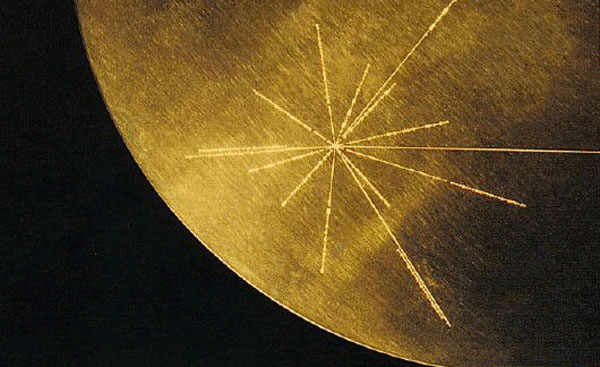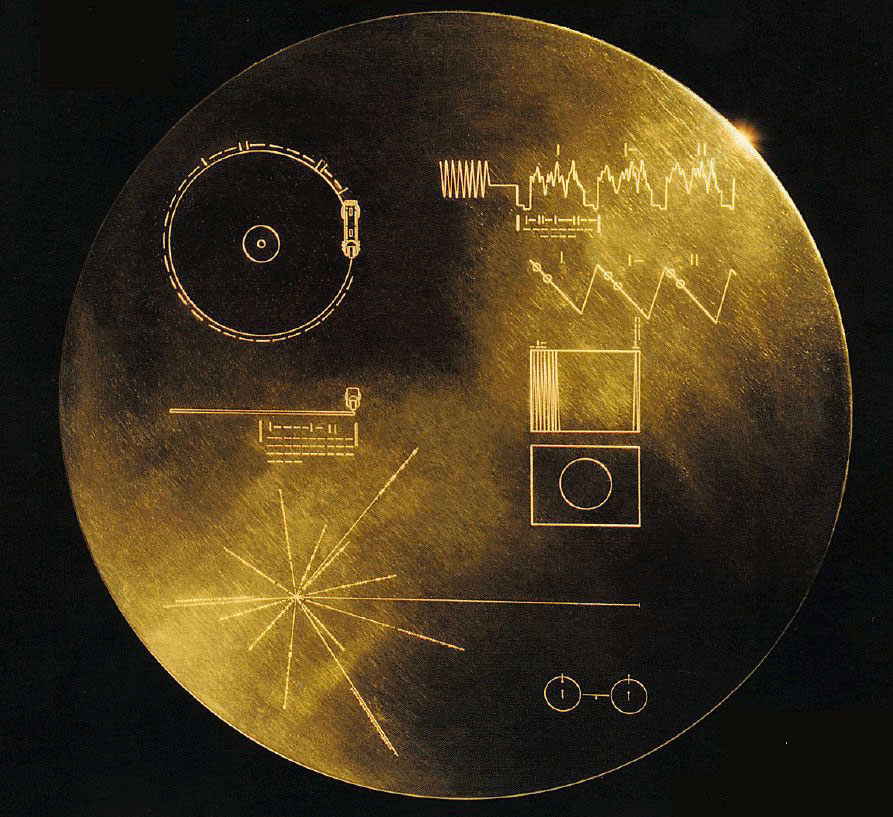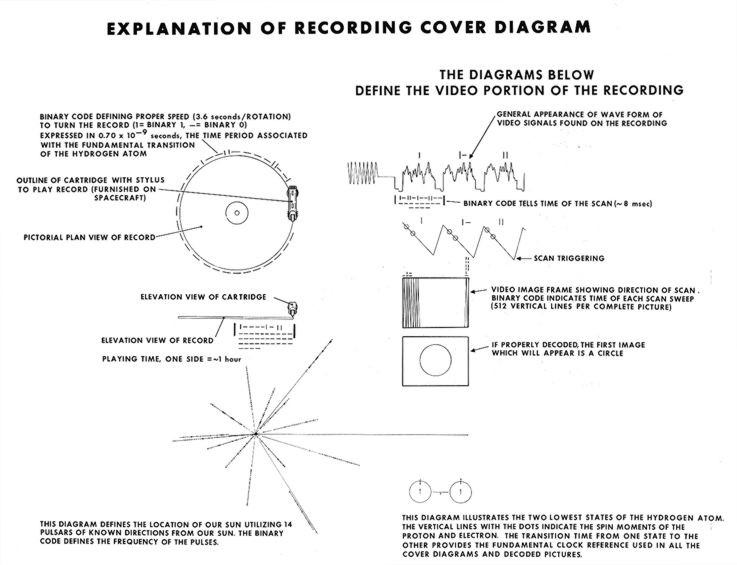What the Heck Is This?

Yeah, this might have looked like alien etchings, or maybe cave art, and to some it might tickle a memory that just can't be pinned down. You can see the full image below.
First, a hint … here's what Carl Sagan said about the subject of this image:
"The spacecraft will be encountered and the record played only if there are advanced spacefaring civilizations in interstellar space. But the launching of this bottle into the cosmic ocean says something very hopeful about life on this planet."
It is the lower-left portion of what's known as the Golden Record, one of the two phonograph records aboard NASA's Voyager 1 and Voyager 2 spacecraft, which after more than 30 years are both out at the edge of our solar system, still talking back, and poised to punch into interstellar space.
Each gold-plated copper disk holds images and sounds portraying the life and culture on Earth, plus music new and old from around the world. Here's the record:

The visible inscriptions on the record serve as a welcome and a guide. The etching that served as the teaser (in the lower left of the record) shows the location of our solar system with respect to 14 stars known as pulsars, and the period of rapid rotation of those stars is noted, to help aliens identify them. In the upper left of the record is a drawing of the record and the stylus carried with it, with instructions on how to play it. The rest of the inscriptions are explained here:

"A billion years from now, when everything on Earth we've ever made has crumbled into dust, when the continents have changed beyond recognition and our species is unimaginably altered or extinct, the Voyager record will speak for us," wrote Sagan and his wife Ann Druyan.
Sign up for the Live Science daily newsletter now
Get the world’s most fascinating discoveries delivered straight to your inbox.
You can learn more about the Golden Record here.
Got a strange or interesting photo related to science or technology? What the Heck, send it to me and maybe I'll use it. I'm on Twitter @RobertRoyBritt, and on Facebook.
Robert is an independent health and science journalist and writer based in Phoenix, Arizona. He is a former editor-in-chief of Live Science with over 20 years of experience as a reporter and editor. He has worked on websites such as Space.com and Tom's Guide, and is a contributor on Medium, covering how we age and how to optimize the mind and body through time. He has a journalism degree from Humboldt State University in California.










